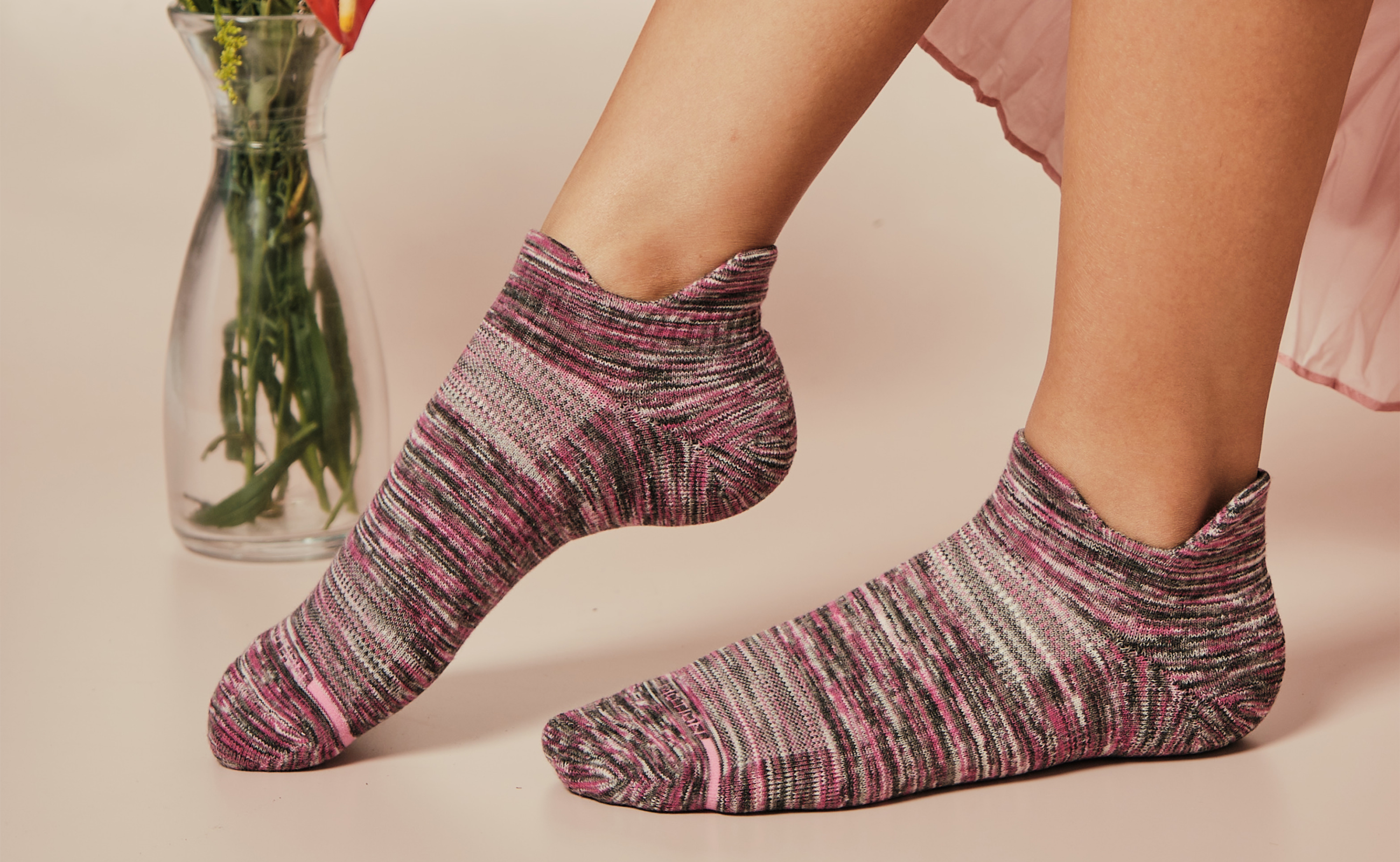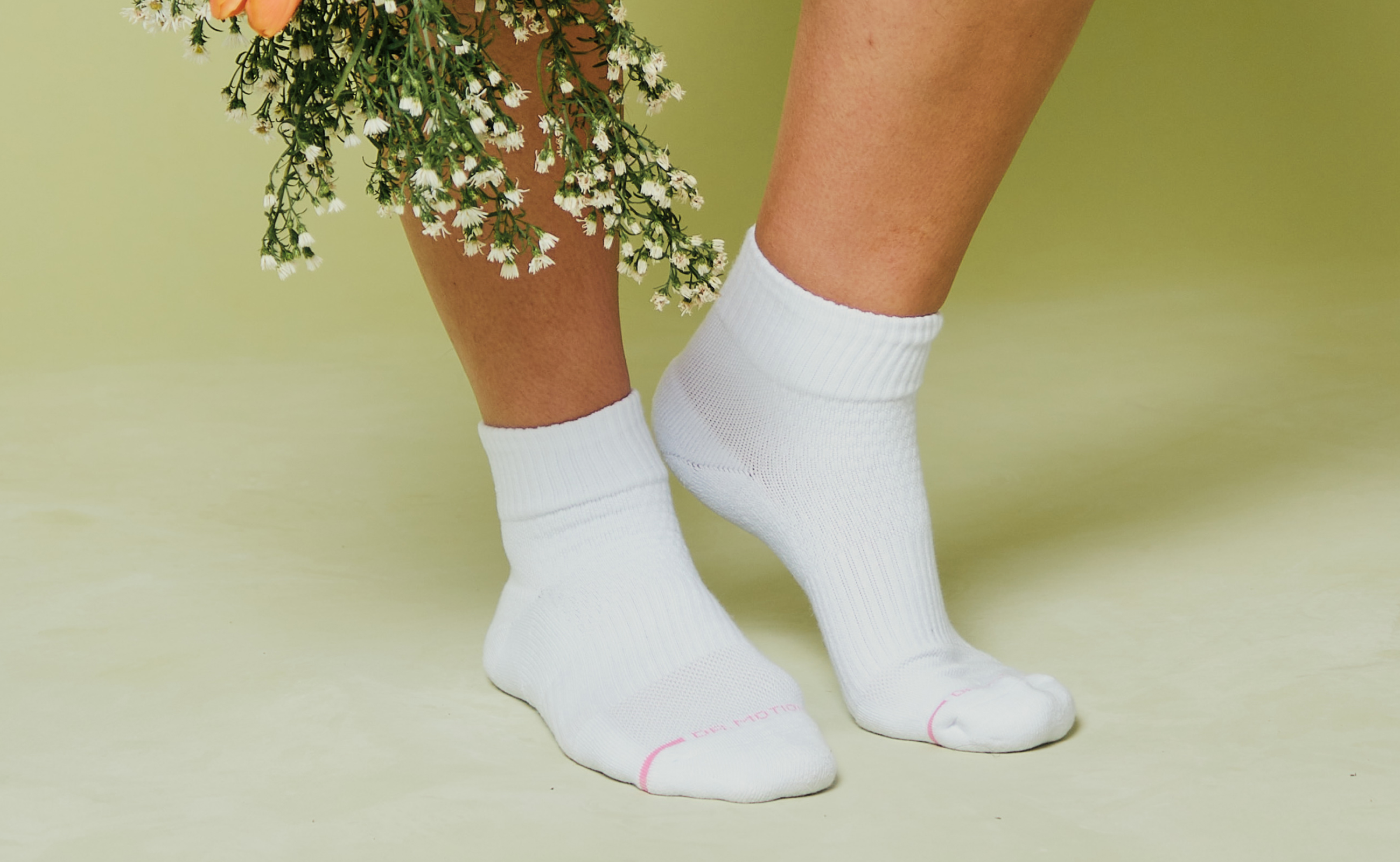Elevate Shin Splint Recovery with Compression Socks
Shin splints are far more than a mere nuisance. They can be a significant barrier, disrupting both your athletic endeavors and daily life. Whether you’re an elite athlete, a driven professional constantly on your feet, or a wellness enthusiast who prioritizes self-care, managing movement effectively is essential. Enter compression socks: a science-backed solution crafted to elevate leg support while enhancing recovery. In this blog, we’ll explore how these sleek essentials can help you combat the problem and seamlessly resume the pleasures of life.

What Are Shin Splints and How Do They Affect You?
Shin splints, clinically known as medial tibial stress syndrome, manifest as sharp or aching pain along the inner edge of the shinbone (tibia). This discomfort typically arises from repetitive stress on the shinbone and the connective tissues attaching muscles to the bone. Common among runners, dancers, military recruits, and anyone ramping up their physical activity, shin splints can range from mild irritation to debilitating pain.
The impact is twofold: physical limitation and emotional frustration. The pain often intensifies during or after exercise, sometimes lingering as a dull ache at rest. This not only hampers your performance but can also interfere with daily tasks, leading to compromised mobility and motivation. Recognizing symptoms early and addressing them properly is key to preventing more serious injuries like stress fractures.
Does Wearing Compression Socks Help Shin Splints?
A 2021 study published in the International Journal of Sports Physiology and Performance found that athletes who wore compression socks during and after maximal exercise experienced significantly less muscle soreness and tightness 24–48 hours post-activity compared to those who did not.
So, can compression socks help shin splints? Yes. With their graduated pressure design, they serve as a non-invasive, convenient solution. Here’s how:
-
Support and Stabilization: By applying graduated pressure from ankle to calf, compression socks reduce muscle oscillation during movement, stabilizing the lower leg muscles and minimizing microtrauma.
-
Enhanced Blood Circulation: Improved venous return means oxygen-rich blood flows efficiently to fatigued muscles, accelerating recovery and reducing inflammation.
-
Reduced Swelling and Fatigue: The consistent pressure helps prevent fluid buildup in the lower legs, alleviating the common swelling that accompanies shin splints.
-
Pain Alleviation: Compression socks provide proprioceptive feedback, which can subtly reduce the sensation of pain and increase comfort during prolonged activity.

Do Compression Socks Prevent Shin Splints, and When Should You Use Them?
Many wonder, do compression socks stop shin splints altogether, or can they truly prevent this common injury? Compression socks are designed to improve blood circulation, stabilize muscles, and reduce swelling, key factors in both preventing and managing shin splints. While they offer significant support that can lower your risk, prevention also depends on proper training habits, footwear, and recovery routines.
They are most effective when worn during activities that place repetitive stress on the lower legs, such as running, hiking, or standing for long periods. Beyond active use, they also offer essential support during the recovery phase. Try incorporating them into your regimen before, during, and after exercise.
How do Compression Socks Compare to Sleeves or Braces?
While sleeves and braces often focus on localized joint support or immobilization, compression socks deliver holistic lower leg care. Sleeves may target specific muscles or tendons, but compression socks extend support along the entire calf and shin area, enhancing circulation and muscle function. Additionally, unlike bulky braces, they are lightweight, breathable, and versatile for both athletic performance and daily wear.
Comparing Compression Socks to Traditional Shin Splint Treatments
When managing shin splints, several treatment options can complement each other depending on your specific condition and recovery goals. Here’s a comprehensive overview:
-
Rest and Ice: Often the first line of defence, these methods reduce inflammation and support tissue healing, especially useful during acute pain or right after intense activity.
-
Anti-inflammatory Medications: Used to manage pain and inflammation, these can provide temporary relief but do not directly aid muscle recovery or address mechanical causes.
-
Physical Therapy: Focused rehabilitation strengthens muscles, corrects imbalances, and improves movement patterns. This approach is invaluable for persistent or recurring shin splints and those aiming to return to high-performance activities.
-
Orthotics and Footwear Adjustments: By addressing biomechanical issues such as overpronation or improper alignment, custom orthotics and supportive footwear can significantly reduce stress on the shins.
Disclaimer: This article provides information solely for educational purposes, including but not limited to text, graphics, images, and other materials contained herein. This article is not intended to substitute for professional medical advice, diagnosis, or treatment. Always seek the advice of your physician or another qualified healthcare provider with any questions you may have regarding a medical condition.







![Myths About Compression Socks [Infographic]](http://drmotionsocks.com/cdn/shop/articles/ZM2P3918_on_human_9cf7b404-128f-4f9a-8d31-7deb2c2dd3d3.jpg?v=1742470843&width=2048)
